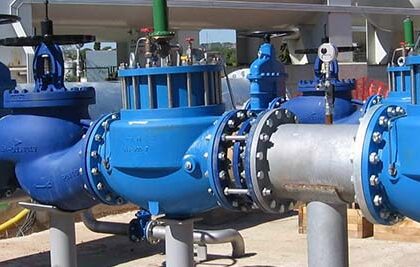On 28th July 2010, through Resolution 64/292, the United Nations General Assembly explicitly recognized the human right to water and sanitation and acknowledged that clean drinking water and sanitation are essential to the realization of all human rights. The Resolution calls upon countries and international organizations to provide financial resources, undertake robust design and construction of both water and sanitation systems to serve the world population currently without access as well as improve reliability in areas experiencing intermittent water supply.
To ensure the manifestation of this resolution, as part of the Sustainable Development Goals (SDGs)/Agenda 2030, SDG 6-“Ensure availability and sustainable management of water and sanitation for all” was later adopted in 2015.
It should be recalled that access to safe, clean, and affordable water is not uniform among countries. While the goal has already been realized by some, for others, mostly developing countries, it is still a work in progress far from realization. As such, identification of potential water sources, undertaking feasibility studies, design, and construction, and ensuring proper management of water supply systems will remain a core focus for most of the developing countries in the short-long term if the realization of safe and clean water for all is to be achieved.
The water supply sub-sector in Uganda is highly decentralized and devolved, from systems’ designs, and construction to management. As such, there are many players within the sub-sector: district local governments, the National Water and Sewerage Corporation (NWSC), International Authorities such as the United Nations High Commissioner for Refugees, the Directorate of Water Development (DWD), and the Umbrella Authorities and several WASH-based Non-Government Organisations (NGOs). The sub-sector also has several private players undertaking the roles of design and construction or rehabilitation of water supply systems on behalf of the former entities.
It is worth noting that all these players are currently involved in some activities aimed at bridging the accessibility gap. The NWSC is the biggest subsector player, independently undertaking the design and construction of water supply projects; both high capital and low cost, and subsequently undertaking their day-to-day management.
The other major player is the DWD which majorly undertakes the design and construction of water supply systems that thereafter transfer the management function to either the NWSC or the umbrella authorities.
On the other hand, some international organizations such as the UNHCR, NGOs, and the district local government authorities mainly design construct, and cede the function of the day-to-day management to beneficiary communities.
Admittedly, the design and construction of localized water supply systems is the main cornerstone needed to bridge the accessibility gap. However, it should be noted that proper management of these systems is equally important, as the mere provision of hard infrastructure is not a “silver bullet” solution for water problems. This reality is affirmed in the SDG 6 targets 6.4 and 6.5; ‘water use and scarcity, and ‘water resources management respectively.
In the Ugandan context, the NWSC possesses the most sophistication and specialization at the management of water supply systems judged from its experience (has been in the business since 1972) but also from the vindication of many international studies on it. It is no wonder, therefore, that it (NWSC) is involved in the management of water supply in more than 256 towns/areas. On the other hand, the umbrella authorities under the MWE can be commended for the good job they are doing as regards the management of water supply systems under their care. However, community-managed systems remain some of the most mismanaged and are therefore the subject of subsequent analysis in this article.
Water supply systems constructed for and managed by the communities themselves in developing countries suffer from mainly two deficiencies: misaligned behavior and technical incapacity.
The effective sustainable management of water supply systems is a complex ongoing scientific task, requiring the use and input of scientific knowledge and procedures daily.
Scientific knowledge is needed in managing such aspects as operation and maintenance, system extensions, water treatment, managing energy costs, working towards sustainable water loss levels and water use efficiency, water quality analysis and adjustment of chemicals’ dosing thereof, etc.
However, hardly do communities or members therein possess such knowledge. The result is therefore usually improper management of these systems which compromises the objectives of setting them up.
On the other hand, due to the lack of an agency to enforce strict management of the water resources on one hand and the lack of proper accountability mechanisms such as universal metering, some unscrupulous members of the society exploit this gap to the detriment of others. As such, cases of water diversion to meet their irrigation needs at the expense of others are common. This is usually done by powerful downstream users at the expense of upstream water users.
On the other hand, financial mobilization to aid in the purchase of critical repair fittings for example is usually not easy. These communities usually agree to a universal surcharge of say Shillings 2000 or $ 0.57 per month, payable by all families that draw their water from the system. In as much as this figure looks representative, it is still flawed when put on the equity measurement scale. This is because all families cannot use the same amount of water every month owing to differences in family composition and water needs extents. No wonder collecting this money from individual families is usually an uphill task. To make matters worse, this money is also usually poorly accounted for by the village user committees as it is mostly misappropriated.
As developing countries, NGOs, and international organizations work towards universal access to clean and safe water and improved sanitation, the modus operandi of entrusting the management of the constructed water supply systems into the total care of communities needs reviewing to address the above gaps.
It is proposed that an assessment be undertaken to study the feasibility of annexing such water supply systems to the existing water supply management agencies i.e. the NWSC and Umbrella Authorities.
On the other hand, different communities could be mobilized into forming specific cooperative societies charged with the management of water supply systems within specific areas such as at the sub-county level, and provided with technical assistance from the Ministry of Water and Environment. This kind of arrangement has been explored in Isingiro district with three cooperative societies of Ruhira Water and energy co-operative Society in Nyakitunda sub-county; Nyamuyanja Community Co-operative Society Limited operating in Kabingo and Birere sub-counties, and Mureme water and energy co-operative society limited. The author has undertaken a mini-study on the operations of these cooperative societies and found them to meet modest water supply systems management practices.
It is also worth noting some NGOs e.g. Oxfam is now directly involved in the continuous system management of the water supply systems they are constructing on behalf of communities. This is commendable and should be replicated by sister NGOs and other development partners.
Furthermore, strategic public-private partnerships could be explored in providing technical assistance to the community-managed water supply systems.
Overall, the role of engineering in working towards better efficiency and effectiveness in regard to water supply systems management needs to be reinvigorated in developing countries to work towards the attainment of important performance indicators such as water use efficiency, energy efficiency, economical water loss levels, etc., community-managed water supply systems ought to be visited first to at least bring them to par with better-managed systems.











